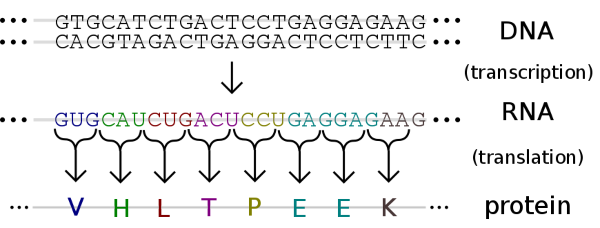 Cindy Mead in Michigan took the picture at the left, showing a Cedar Waxwing, Bombycilla cedrorum, during a heavy snow. Cindy tells us that the bird was catching snowflakes. Surely it was just disgorging fruit "pits," or seeds, after a big meal of something like Hackberry fruits, it was suggested. But, Cindy insists that "they were definitely catching snow because some were 'pecking' at the air. No pits were spit."
Cindy Mead in Michigan took the picture at the left, showing a Cedar Waxwing, Bombycilla cedrorum, during a heavy snow. Cindy tells us that the bird was catching snowflakes. Surely it was just disgorging fruit "pits," or seeds, after a big meal of something like Hackberry fruits, it was suggested. But, Cindy insists that "they were definitely catching snow because some were 'pecking' at the air. No pits were spit."
So, as Cindy said, "Just when you think you've seen it all..." birds do something really unpredictable. I felt the same way when I first saw Clay-colored Sparrows taking "dew baths" -- flying into dew-wet leaves of mesquite trees in Mexico to wet their bodies as a form of bathing. And then Yellow-rumped Warblers arrived, watched the sparrows, seemed to learn the process, and began dew-bathing themselves!
It's almost as if birds think, and learn... like humans. But, do they? Can they?
 White-crowned Sparrow, Zonotrichia leucophrys; image by Frank Schulenburg, via Wikimedia Commons
White-crowned Sparrow, Zonotrichia leucophrys; image by Frank Schulenburg, via Wikimedia CommonsA 2011 paper by Stephanie Plamond and others, in the Journal of Comparative Psychology, tells us something interesting about White-crowned Sparrows, which turn up in many US backyards during the winter. That's one at the right. Even when newly hatched White-crowned Sparrows are kept where they can't hear any kind of bird song, when they're about a month old they begin singing simple notes, a kind of bird babble known as subsong. When the birds are about 100 days old, their subsong "crystallizes" into a form that thereafter doesn't change much. What's fascinating is that at this stage they sing their song well enough for experienced birders to hear the White-crowned Sparrow element in it. The song isn't nearly as rich and pleasant to hear as that produced by birds who have grown up hearing their own species' songs, but it's there.
Earth's living things are born with strings of commands expressed in terms of patterns of chemical nucleotides, or bases, on the DNA molecule in cell nuclei. The four base pairs written as A,T,C and G represent the chemical compounds adenine, thymine, cytosine and guanine. An example of code is shown below:

Think about it: The song a bird sings is at least partly innate -- programmed* in their genes. Birds are actually born with the melodies of their species' song implanted in them.
Innate behavior is hardly evident only in White-crowned Sparrows. If a small "window" is cut into the shell of an incubating chicken egg, unhatched chicks can be seen moving their heads, opening and closing their beaks, and even making pecking movements. Clearly, nothing has taught the unhatched chicks to peck. They are simply created with the pecking urge, or instinct.
When a Canvasback duckling has just hatched, immediately after drying off it can walk, swim, and, if necessary, dive below the water's surface -- even if the duckling has been hatched in an incubator, and couldn't have learned walking, swimming, and diving from any other creature.
Some innate behavior doesn't appear until the bird is an adult. When a female Canvasback duck is about a year old and builds her first nest, that nest is exactly like all other Canvasback nests, even if the duck has been kept in isolation all her life.
 Cooperative problem-solving in Rooks, Corvus frugilegus; drawing courtesy of "Edwininlondon" via Wikimedia Commons
Cooperative problem-solving in Rooks, Corvus frugilegus; drawing courtesy of "Edwininlondon" via Wikimedia CommonsHowever, don't think that birds are like mindless machines. Consider the experiment by Amanda M. Seed and others addressing the question, "Can Rooks cooperate to solve a problem?" Their paper, published in 2008, was entitled "Cooperative problem solving in rooks (Corvus frugilegus)". That study found that, "Without training, eight rooks quickly solved a problem in which two individuals had to pull both ends of a string simultaneously in order to pull in a food platform," as the sketch shows.
It's fun to think about this subject. Not only does evidence indicate that bird mentality can surprise us when we learn what bird minds can and cannot do, but also it brings up this question:
Since, like birds, you and I are animals with strings of commands expressed in terms of patterns of base pairs on the DNA molecule in our cell nuclei, and it's known that much of human behavior arises from our genes -- knee-jerk reaction, predisposition to detect and respond rapidly to snakes, gene-control of normal level of sexual hormones affecting degree of aggressiveness -- in our own everyday behavior, what's learned, and what's innate? How much choice do we really have in the matter of "free will"? We may do what we want, but do our genes oblige us, or at least predispose us, to do what they program us to want?